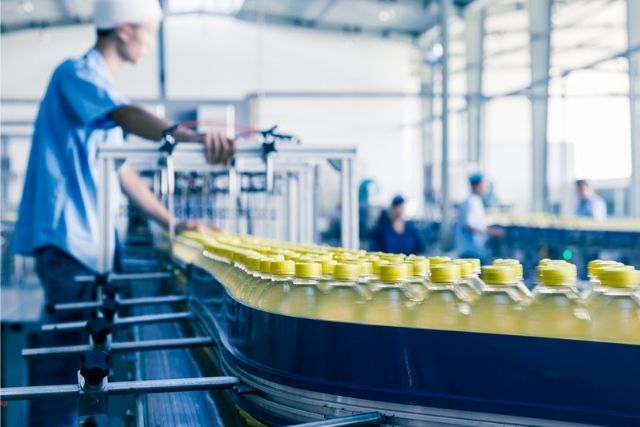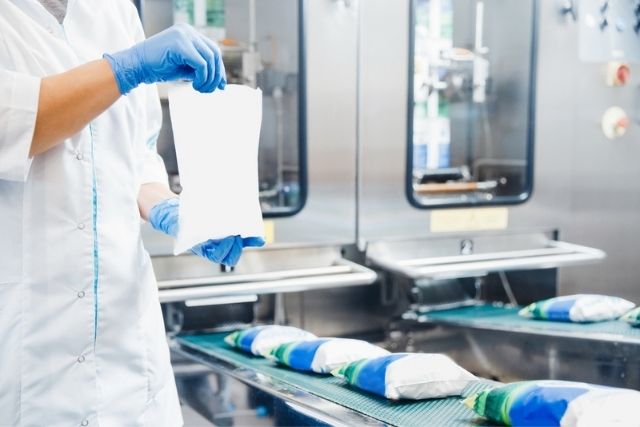
In my last blog, I looked at the food packaging technology, specifically the importance of end of line automation in the food industry and how it can benefit both workers and product line efficiency as a whole. However, another often less discussed area where huge efficiency gains can be made is in the training and upskilling of operators of packing line machines for food products.
Here, I’ll examine the current problems with operator training and what can potentially be done about them.
The issues with current operator efficiency
Over recent months I have researched over 50 food manufacturers and found that they average around 40-50% downtime. In other words, going by those numbers, a food packaging plant that claims to be operating 24/7 is actually functioning as little as half its potential output. It’s a huge loss of efficiency, representing around £180bn in lost revenue each year to British food manufacturers.
This downtime can be caused by many factors, including:
- Product or film/packaging changeovers
- The wrong products in the wrong packets
- Product contamination
- Breakdowns and faults
- Cleaning
- Maintenance
- Human operator error
- And more besides
Of that downtime, as much as 30% is unplanned. That means unscheduled maintenance and reactive responses to unforeseen problems. This can be a particular problem in factories that deal with different food lines, from crisps to ready meals to salads.
While naturally not all of these issues can be avoided, the vast majority of companies I spoke to believed that a well-trained team of food operators could achieve between at least 5-10% more uptime than their current average. Some even claimed this uptime swing might go as high as 15-20% if the right operator training methods were implemented effectively.
The problem with current food hall operator training methods

Understanding the central issues with current operator training methods in food processing factories means taking time to understand the market factors at play.
For starters, this is a typically low-skilled workforce with a reasonably high turnover – companies potentially see around 25-30% of leavers and newcomers each year in these roles. Much of this workforce comes from outside the UK – which Brexit has certainly not helped. Indeed, many companies are suffering worker shortages, exacerbated by the impact of Covid. This often means that the existing workforce is asked to work longer hours, or more shifts each week.
Training in this circumstance usually happens in person during the initial onboarding. Additionally, when equipment suppliers install new equipment, they will offer a round of training in its use. However, they won’t come back to provide further training unless specifically asked. In a company made up of over one-quarter new employees each year, this creates a considerable shortfall in suitable training – both in terms of educating new starters, and offering refreshers to existing employees.
The result is a highly fragmented market, where factories built with machinery from different suppliers need to repeatedly turn to different OEMs for ongoing education in best-practice.
On top of this, the persons sent by those OEMs are often engineers, and skilled to advise in a technical capacity. The training given therefore often misses many of the important general action points that need to be undertaken on a daily and weekly basis in production environments. Indeed, many equipment manufacturers are SMEs without the capacity to supply best practice training. Further still, OEMs use a network of distributors and agents to do training in most territories which further dilutes the quality of the training supplied.
The potential answer
The issues mentioned above are experienced industry-wide and globally. The lack of a single unifying best practice training provider creates huge problems that impact efficiency right across the sector.
The answer could be to create a more generic training programme with a full accreditation system. One that’s not only completely independent of the equipment manufacturers, but is delivered to a higher standard and – crucially – is available on-demand as online content.
Why online?
As mentioned above, most food packing operator training is delivered before the worker begins, in a classroom setting. There is research available that indicates people only retain between 8-10% of what they learn in classroom settings, versus retaining between 25-60% more when learning online.
Online learning also allows new starters to do initial onboarding from home, taking the training at their own pace and thus lowering the Covid-related risks in your office environment. It also carries the added benefit of allowing businesses to develop a more modern image while appealing to a younger demographic, who now expect flexible online working to be offered as standard where suitable.
Potential benefits to food production companies

Should such a single unifying standard for training come into place in the food packing industry, the benefits to companies could include:
- Less potentially expensive repairs: Machines being operated more efficiently, more often, with less user error, are prone to go wrong less. That doesn’t just mean more productivity from more uptime, it means less needless outlay on expensive repairs
- Less food waste: Food packing machines not being set up correctly also tends to create faults in the line, leading to lots of wasted product. All of which is a significant business expense. Improving operator efficiency in food packing halls is a sure-fire way to bring the wastage numbers down from a lack of consistent operator error
- Lower packaging spend: As well as potential food waste, packing hall machines being set up incorrectly can also damage and waste packaging – meaning businesses need to invest in more to offset the expected damage. With better training of operators, you can forecast for lower numbers in this area also.
The future of food packing halls?
As it stands, there isn’t a natural solution currently available on the market for food packing businesses that want to improve their operator training. However, trends are emerging – and I’m currently working with well-known food businesses to understand them, in the name of finding a solution.
Interested in knowing more? Get in touch to find out.
Or for more tips to help improve your food production business, see the blogs below.

